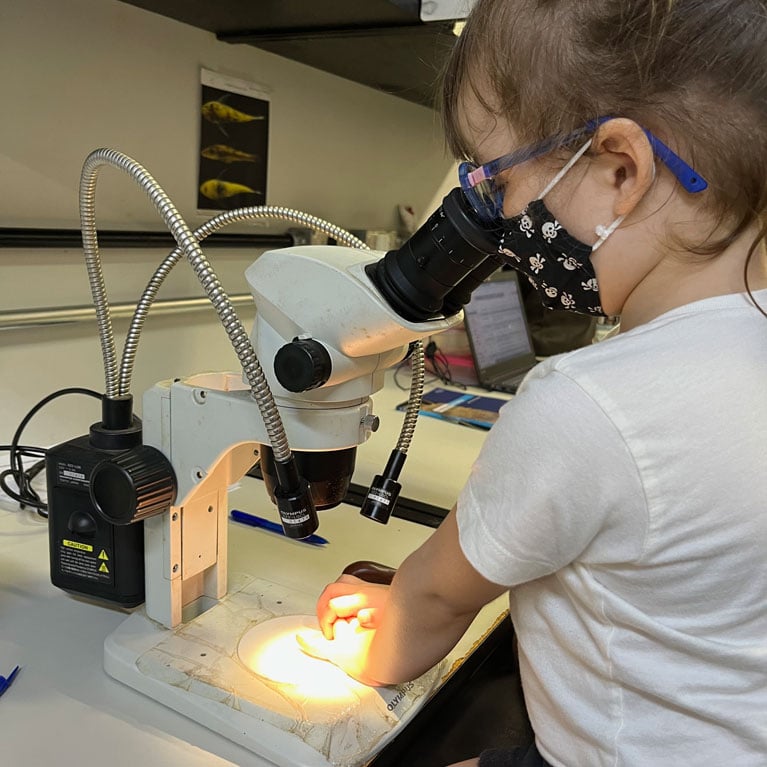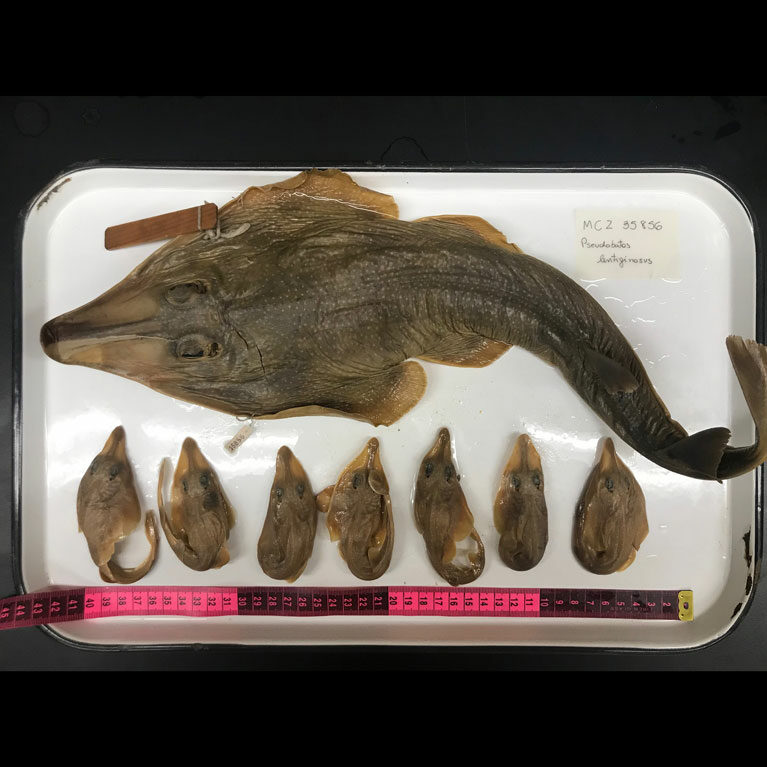Unraveling the amphi-American guitarfishes: genetics, morphology, and biogeography of guitarfishes
Fernanda is using genetic samples of guitarfishes to disentangle the life histories and genetics of the nine different species found around the Americas and the Caribbean. Identification to species level, simply by eye in the field, is difficult and requires much experience. However, guitarfishes are often caught as bycatch or the targets of trawlers – and not all species are under equal pressure. Fernanda’s project will go a long way to helping inform the management of these species around their range.
I have always had a connection with the sea, although I was born and raised in a very urban setting in São Paulo, Brazil, the largest city in South America. It is at least one hour away from the coast, but whenever possible I would go to the sea. I spent many childhood vacations and weekends at the coast, usually sitting near the water or exploring the rocky shore, looking for dead animals to cut open. I think I was 12 when I discovered that there were such people as professional marine biologists and I decided then that I wanted...



Unraveling the amphi-American guitarfishes: genetics, morphology, and biogeography of Pseudobatos
My key objective with this project is to investigate and evaluate species and populations of the nine species of the widely and highly threatened guitarfish genus Pseudobatos, using genetics, morphology, and biogeography.
Five of nine Pseudobatos species are under extinction risk, yet, they are intensely fished. They are currently part of the Family Rhinobatidae, but perhaps, they could be in their own family. To decide that and to protect all the species, not only the threatened, we need more and deeper studies investigating them. We need better understanding of the group, especially its genetics, to aim at the conservation of natural populations and sound fishery management too.
Genetic diversity is important for the response of a population to pressures and changes in the environment. It is one of the criteria used for extinction risk lists, as the IUCN Red List of Threatened Species. Sharks, skates, and rays, or elasmobranchs, are especially vulnerable to overfishing, either as target or bycatch. The guitarfishes of the Family Rhinobatidae are intensely fished, usually as bycatch of groundfish fisheries, like shrimp bottom trawlers. Half of the guitarfish species are on the 2020 IUCN Red List, some as threatened (Vulnerable, Endangered, or Critically Endangered). The Rhinobatids were recently partially reorganized, more information is necessary to complete the group reorganization. The genus Pseudobatos is part of the Rhinobatidae, but molecular and preliminary morphological data point to its apparent placement in a separate family. There are nine Pseudobatos species, they are on both sides of the American continent, from California, USA to Northern Chile in the Pacific and from North Carolina, USA to Northern Argentina in the Atlantic. They usually co-occur in sympatry, in other words, with other species of the same genus, to whom they are closely related. Pseudobatos species are remarkably similar, making rapid identification to the species level problematic, especially considering that five are at risk of extinction. Conservation and fishery management need detailed information on species and structure of populations, to clarify, for example, whether isolated populations of a species are still the same species.
My main objective is to investigate and evaluate the nine species of Pseudobatos, using genetics and morphology. To do so, I am going to evaluate genetic differentiation and diversity of Pseudobatos’ populations and analyze species delimitation. I want to know if geographic and genetic distances are related and whether two populations of one species are still the same species. I am also going to do geometric morphometrics, a methodology that blends biology and geometry, to analyze the morphology of the animals in different maturity stages, from embryos to adults, females, and males. In my PhD thesis, I am also going to study Pseudobatos biogeography, by evaluating historical isolation of populations, integrating the results I will obtain in the genetic and morphological analyses too. I will elaborate distribution maps of the species ranges at their divergence estimated timings (from genetic analysis), using geological data of the position of the continents.

